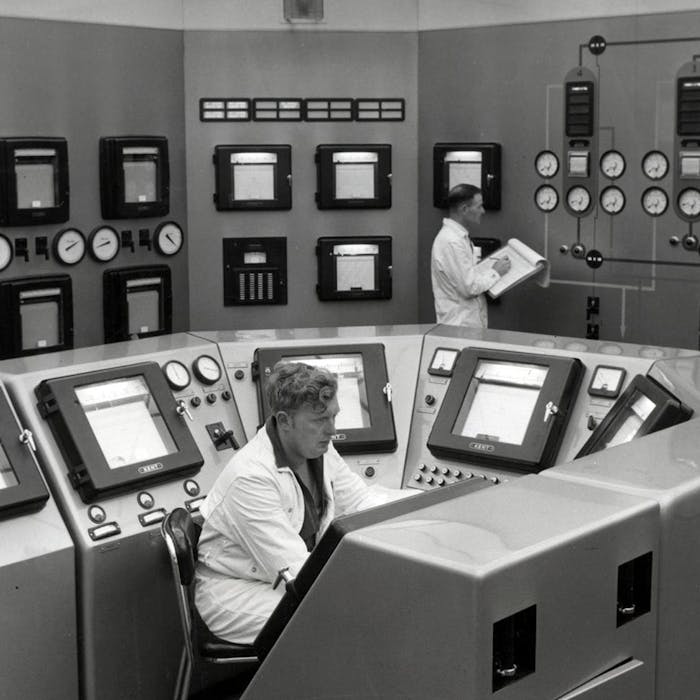
Calder Hall - the world's first commercial nuclear power station
Calder Hall at Sellafield, Cumbria, was the world's first and longest-serving nuclear power plant used for commercial electricity generation. Opened in 1956 and designed to last 20 years, it was operational for 47 years before closing in 2003.
Work began on the station in 1953 with the first electricity transmitted to the National Grid three years later. The town of Workington 24km away was the first in the world to receive electricity produced by nuclear power. The power station was officially opened by Queen Elizabeth II on 17th October 1956.
Although the station was promoted as generating electricity that was too cheap to meter, it actually produced relatively little during its working life. Calder Hall’s capacity of 196MW was far less than the 1,200MW output of the Sizewell B modern reactor, for example. However, the lessons learned from Calder Hall led to more successful nuclear power stations able to produce far more electricity.
Calder Hall was in fact primarily intended to produce plutonium for the UK’s atomic weapons programme. Producing electricity for the domestic market was a sideline for the plant.
The station had 4 Magnox reactors. Magnox (from the phrase ‘magnesium no oxidation’) refers to the metal content of the nuclear fuel containers. In a Magnox reactor, magnesium alloy is wrapped around each uranium fuel rod.
By the time Calder Hall generated its last electricity in 2003 it was the oldest Magnox power station in the world. Its cooling towers were demolished using explosives in September 2007 as part of the plant’s decommissioning process. The slow and expensive work of completely decommissioning the site continues.
It will be at least 100 years before the land on the site can be re-used. The remote Sellafield location of Calder Hall is now the home to successor nuclear power facilities
Further reading
Links to external websites are not maintained by Bite Sized Britain. They are provided to give users access to additional information. Bite Sized Britain is not responsible for the content of these external websites.
